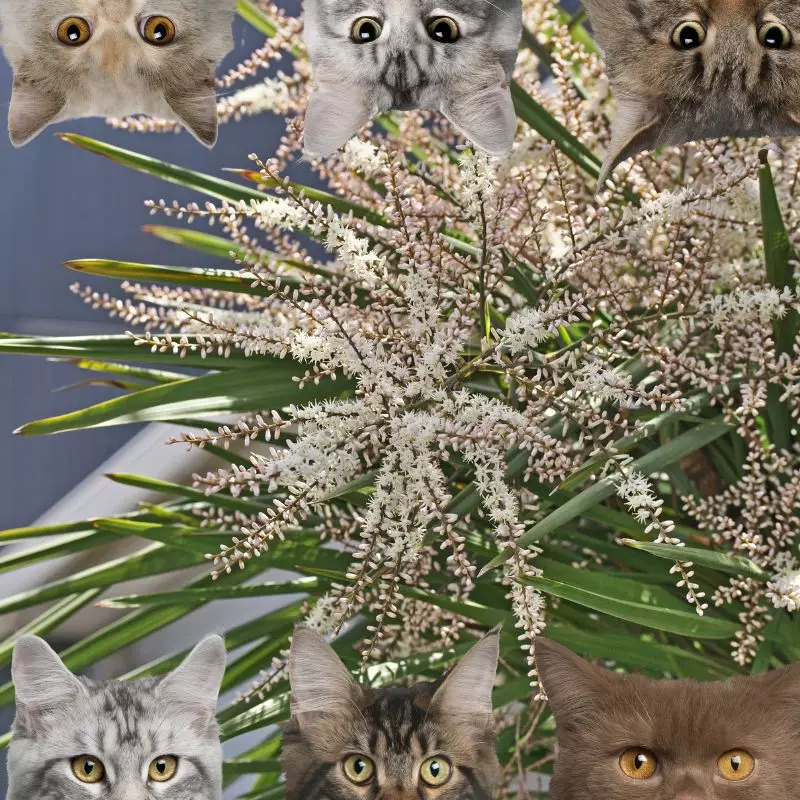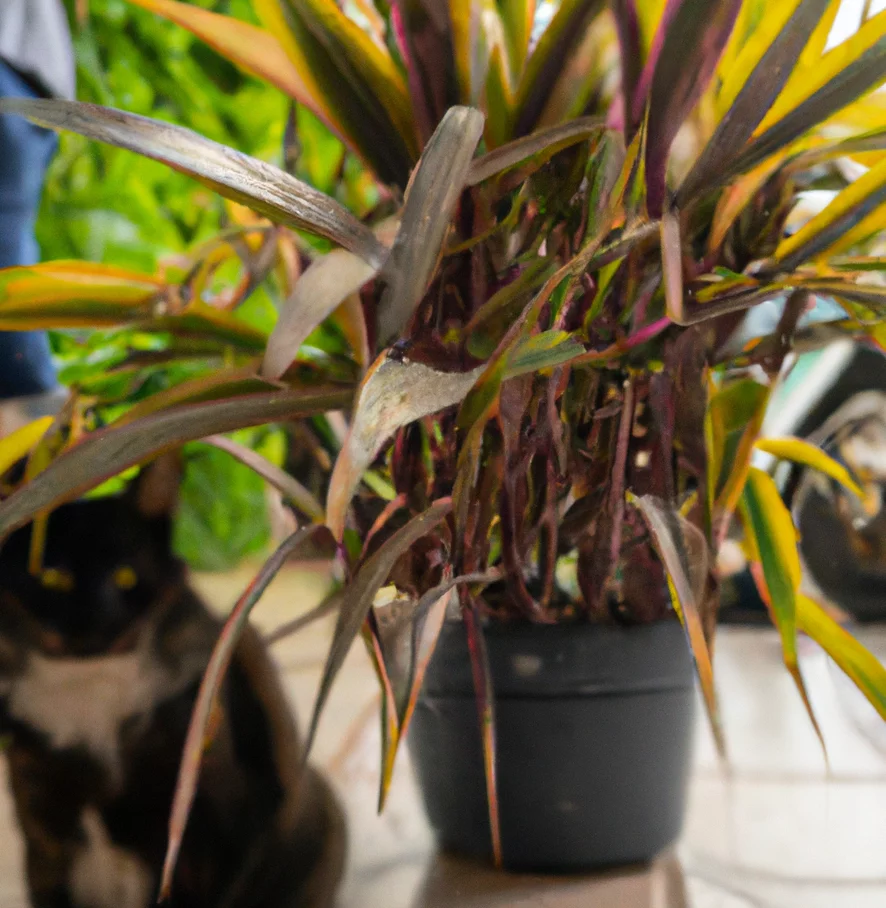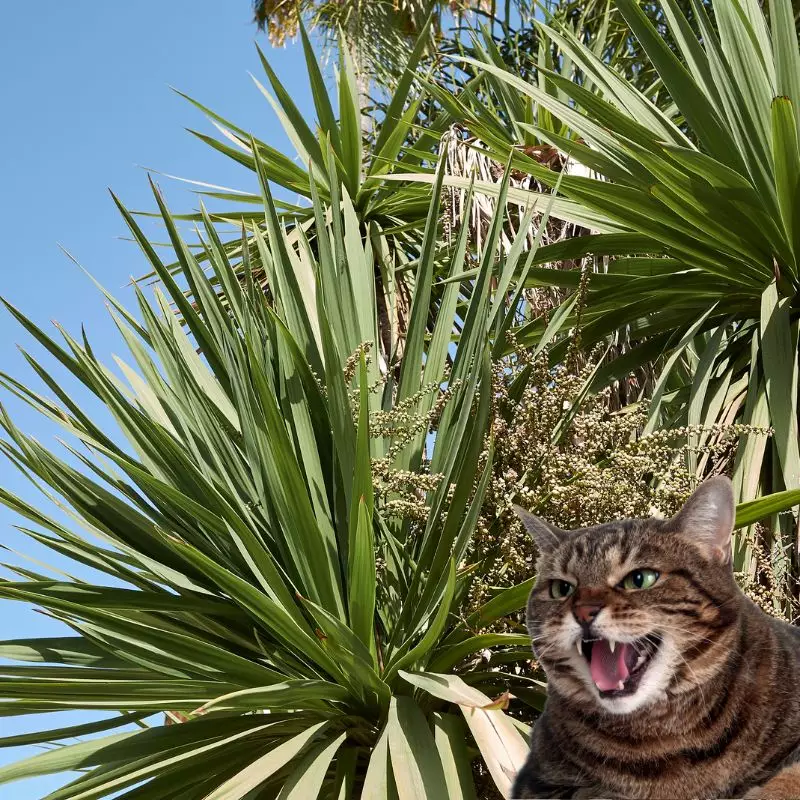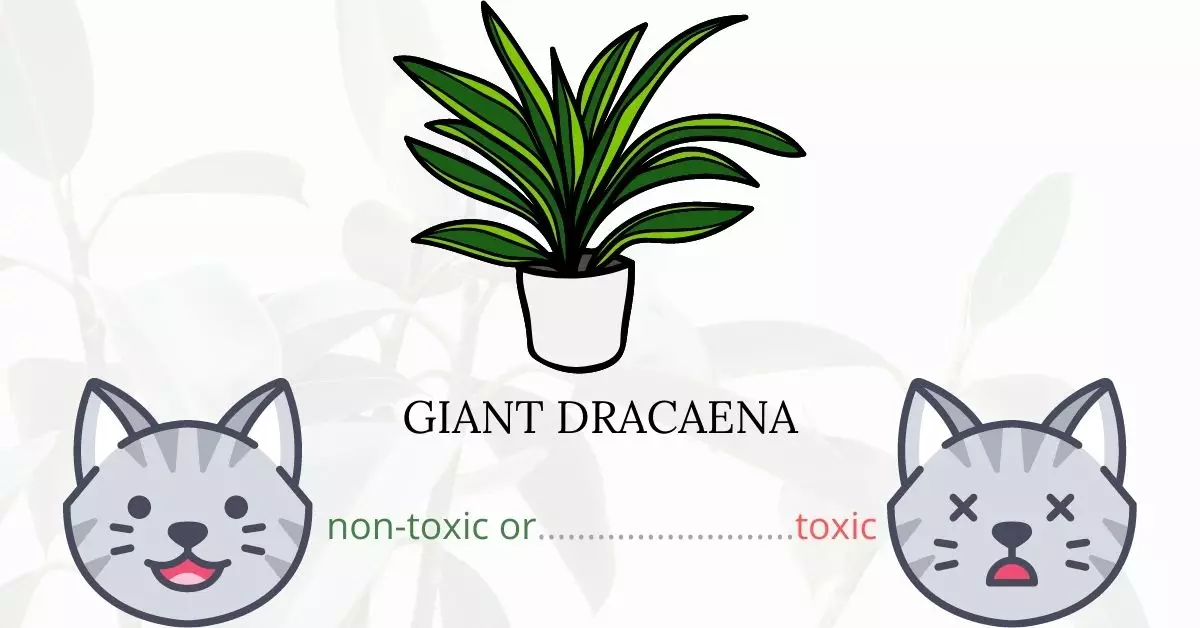Giant Dracaena (also commonly known as palm lily and grass palm) can be toxic to cats, primarily due to the presence of saponins. Saponins are natural compounds produced by the plant to protect itself from insects, bacteria, and fungi. While the toxin concentration in Giant Dracaena is modest, ingestion can typically cause gastrointestinal distress in cats. Fortunately, the saponins impart a bitter taste to the plant, which makes it less appealing and reduces the likelihood of a cat consuming a dangerous amount.
It’s important to note that this article was meticulously crafted in collaboration with a team of experienced DVMs (doctors of veterinary medicine). Their invaluable input ensures that our readers receive accurate and up-to-date information regarding the potential risks plants might pose to their feline friends. Furthermore, for every plant we discuss, we also consult high-authority websites such as ASPCA and PetMD to corroborate our findings.
Clinical Signs of Giant Dracaena or Grass Palm Poisoning in Cats

When a cat comes into contact with, smells, or ingests parts of the Giant Dracaena or grass palm plant, they may exhibit several clinical signs due to the plant’s natural toxins. Here’s a breakdown of the symptoms and the reasons behind their occurrence:
- Gastrointestinal upset: The saponins present in the plant can irritate the stomach lining, leading to discomfort and a disturbed digestive system.
- Vomiting: As a direct reaction to the toxins, the cat’s body tries to eliminate the ingested harmful substances, leading to vomiting.
- Diarrhea (sometimes with blood): The irritation caused by the saponins to the intestines might result in diarrhea. In severe cases, this can cause damage to the intestinal lining, leading to the presence of blood in the stool.
- Depression: Feeling unwell due to the toxic ingestion can make cats lethargic or less responsive than usual, often interpreted as depression.
- Loss of appetite: The overall feeling of nausea and discomfort will most likely lead to a decreased desire to eat.
- Drooling: The plant’s bitter taste, combined with the irritation caused by the saponins, can lead to excessive salivation or drooling.
- Dilated pupils: A possible neurological effect of the toxins, indicating that the cat’s nervous system is responding to the ingested substance.
It’s essential to understand that while the plant’s bitter taste generally discourages cats from consuming large amounts, even a small ingestion can lead to these symptoms. Always monitor your cat closely if you suspect contact with or ingestion of the Giant Dracaena plant, and consult a veterinarian immediately if any of these symptoms are observed.
First Aid and Treatment of Giant Dracaena or Grass Palm Poisoning in Cats

The veterinarian will most likely provide symptomatic and supportive therapy since the primary goal of treatment is managing the symptoms. If your cat has just consumed gigantic dracaena, the veterinarian may administer hydrogen peroxide orally to induce vomiting. Kapectolin may also be given to your cat to help with stomach upset and diarrhea. Kapectolin’s coating activity protects the stomach lining. Sucralfate is also used to relieve gastrointestinal pain because it reacts with stomach acids to form a paste-like substance that acts as a barrier between the stomach and its contents.
Recovery from Giant Dracaena or Grass Palm Poisoning in Cats

Because the majority of gigantic dracaena poisoning cases are mild, the prognosis is good, and cats should recover completely in one to two days. Recovery time may be extended in extremely rare cases of serious poisoning.
Prevention of Giant Dracaena or Grass Palm Poisoning in Cats
If you live in an area with giant dracaenas around, it is best to discourage your cat from going outside. Keep your cat busy and stimulated indoors as they tend to wander away and nibble on unknown plants outside when they are bored. Maintain their good health condition by giving adequate fluids and well-balanced diet.
If you love plants but have cats at home, check out these lists:





